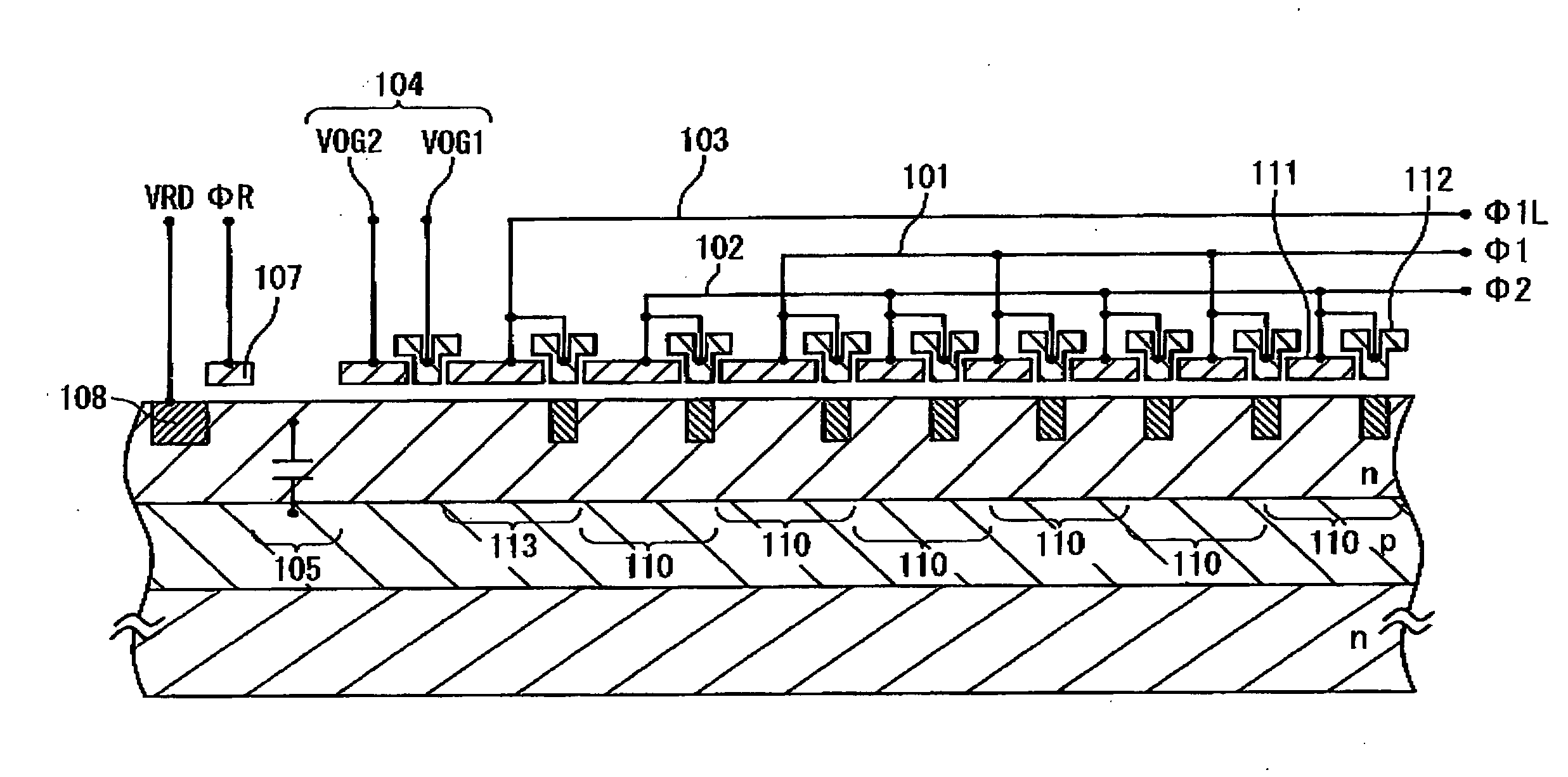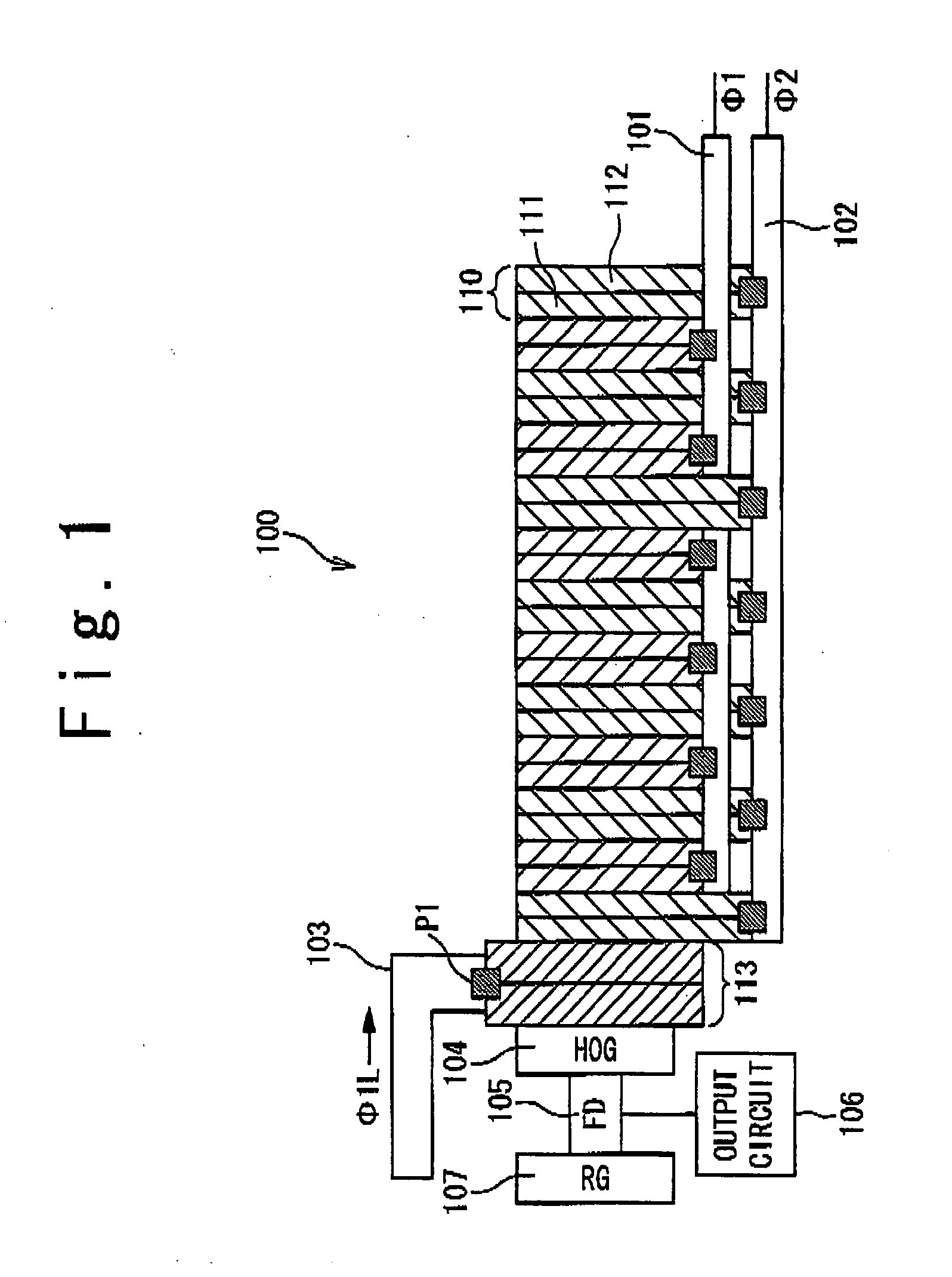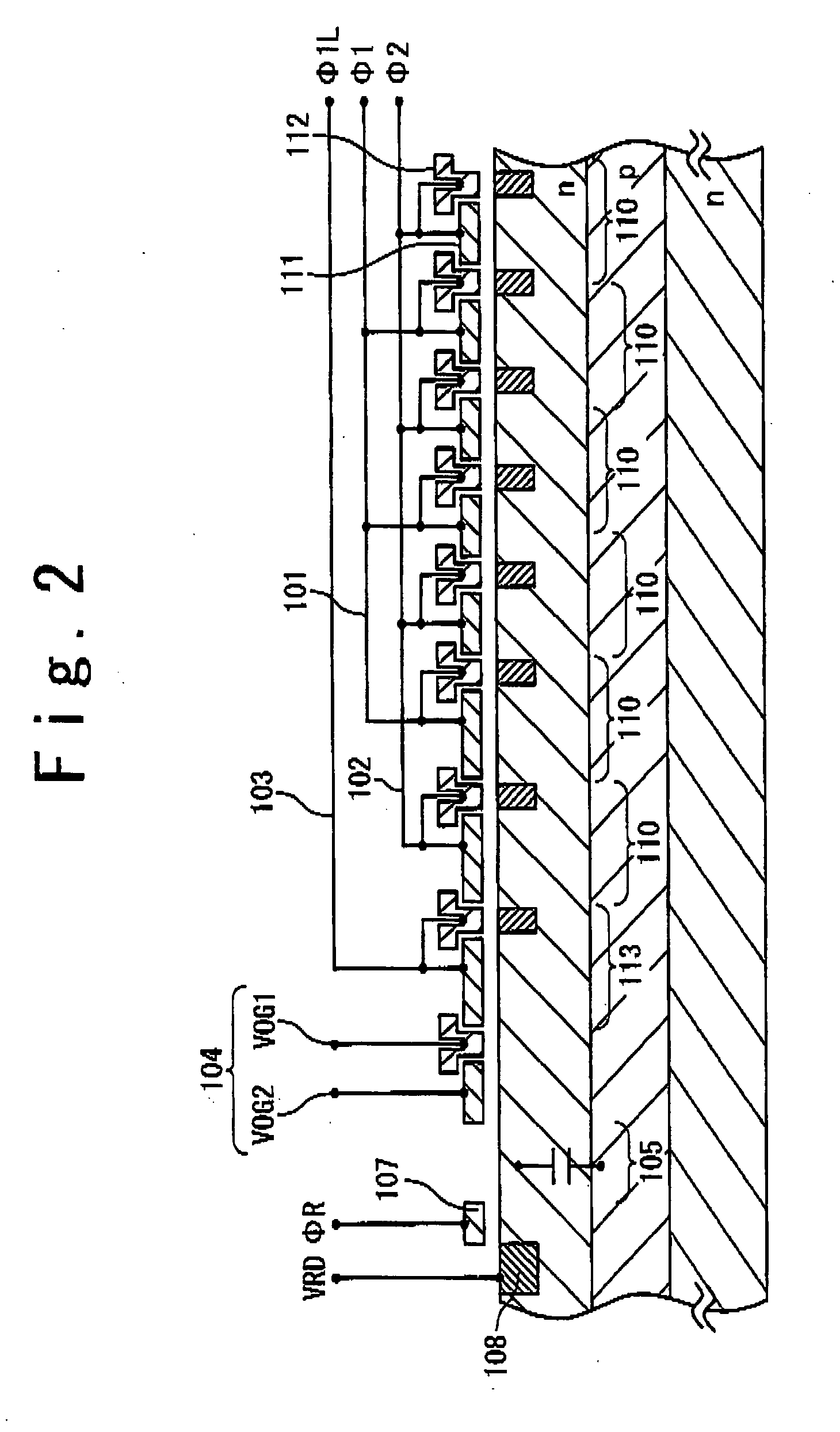Solid-state image sensing device and method of operating the same
- Summary
- Abstract
- Description
- Claims
- Application Information
AI Technical Summary
Benefits of technology
Problems solved by technology
Method used
Image
Examples
first embodiment
[0049]FIG. 7 is a plan view illustrating the structure of a solid-state image sensing device in a first embodiment of the present invention. The solid-state image sensing device in the first embodiment is provided with a CCD (charge coupling device) 1 for transferring electric charges, and a clock generator 2 feeding a set of clock signals to the CCD 1. The CCD 1 includes first transfer electrode pairs 4, second transfer electrode pairs 3, third transfer electrode pairs 6, fourth transfer electrode pairs 5, an output gate 7, a floating diode 9, a reset gate 10, and a reset drain 11. The first transfer electrode pairs 4 commonly receive a first clock signal Φ1, and the second transfer electrode pairs 3 commonly receive a second clock signal Φ2. The third transfer electrode pairs 6 commonly receive a third clock signal Φ1L, and the fourth transfer electrode pairs 5 commonly receive a second clock signal Φ2L. The first and third clock signals Φ1 and Φ1L have the same phase, and the sec...
second embodiment
[0083]In the following, a description is given of a second embodiment of the present invention. In the following, same elements are denoted by same numerals as in the first embodiment; elements denoted by the same numeral are identically designed to provide the same function. Therefore, duplicated descriptions are not given for the elements denoted by the same numeral in the first embodiment.
[0084]FIG. 16 is a plan view of the solid-state image sensing device in the second embodiment. The solid-state image sensing device in the second embodiment is provided with the CCD 1 and the clock generator 2. The CCD 1 additionally includes a fifth transfer electrode pair 6a. The solid-state image sensing device in the second embodiment achieves summing signal charges of two adjacent pixels through appropriately controlling the waveform of the fifth clock signal Φ1L′. The clock generator circuit 23 within the clock generator 2 generators the fifth clock signal Φ1L′ in addition to the first to ...
third embodiment
[0093]FIG. 22 is a plan view illustrating the third embodiment of the present invention. The clock generator 2 in the third embodiment includes a set of inverters 22-1 to 22-4. The inputs of the first and third inverters 22-1 and 22-3 are commonly connected with a first node N1 that is connected with a first output of the clock generator circuit 23. The inputs of the second and fourth inverters 22-2 and 22-4 are commonly connected with a second node N2 that is connected with a second output of the clock generator circuit 23, Such arrangement of the clock generator 2 effectively reduces the number of the outputs of the clock generator circuit 23.
PUM
 Login to View More
Login to View More Abstract
Description
Claims
Application Information
 Login to View More
Login to View More - R&D
- Intellectual Property
- Life Sciences
- Materials
- Tech Scout
- Unparalleled Data Quality
- Higher Quality Content
- 60% Fewer Hallucinations
Browse by: Latest US Patents, China's latest patents, Technical Efficacy Thesaurus, Application Domain, Technology Topic, Popular Technical Reports.
© 2025 PatSnap. All rights reserved.Legal|Privacy policy|Modern Slavery Act Transparency Statement|Sitemap|About US| Contact US: help@patsnap.com



